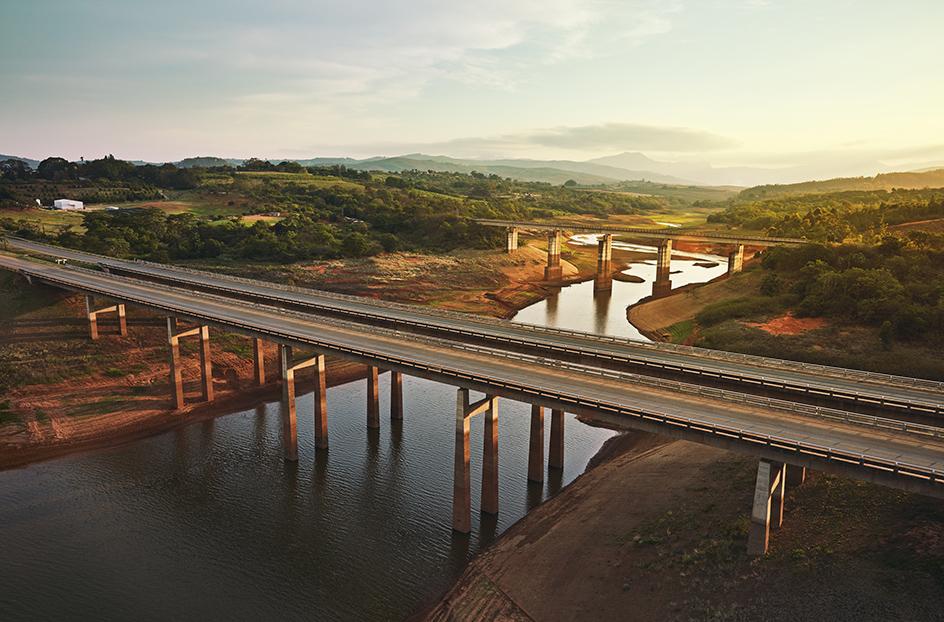Africa-Press – Eswatini. Conditions imposed by the International Monetary Fund and the World Bank to implement economic policy reform for economic stability in emerging markets had the unintended consequence of stifling infrastructure investment programmes. As a result, the ambitious Trans-African Highways (TAH) conceived in the 1960s to link the continent faltered. These “structural adjustment programmes” – known as the Washington Consensus – partially explain why Africa’s infrastructure has not kept pace with the growing demands of the rest of the world. These institutions have taken cognisance of the unintended consequences and criticism regarding additional factors that inhibit infrastructure development financing.
However, there is progress notwithstanding the headwinds that include COVID-19, the Russia-Ukraine war, and the economic challenges of the African continent. According to the African Development Bank (AfDB), infrastructure needs amount to $130–170 billion a year, while the infrastructure investment gap is more than $100 billion. As a result, African governments – and their infrastructure vehicles tasked with implementing critical projects – are tapping more into foreign investment institutions and making increasing use of private sector investments, primarily through public-private partnerships (PPPs) and capital market instruments.
Limited transport infrastructure means less potential trade and adds significant costs to products. The World Bank estimated that by reducing transport costs by as little as 10%, trade in Africa would increase by 25%. To put it bluntly: roads lift people out of poverty and change lives for the better.
According to the AU report – AUDA-NEPAD Second Continental Report February 2022 – between 2015-2020, the African Development Bank (AfDB) built and rehabilitated 15,000km of feeder roads to improve rural access. The projects benefited 76 million people, boosting food production for domestic consumption and export and averting food imports.
African Continental Free Trade Agreement (AfCFTA)
The continent’s trunk road network carries an estimated $200 billion worth of Africa’s trade, so roads and corridors are high on the agenda for meeting the African Union’s “Agenda 2063: The Africa We Want” requirements. According to the UN’s Economic Commission for Africa (ECA), AfCFTA will increase the volume of annual road freight from 200 million tonnes to more than 400 million.
The vision of Agenda 2063 is beginning to be realised. One year into the implementation of AfCFTA and SANRAL strives to advance its long-standing involvement in road infrastructure development on the African continent.
The World Bank estimates that implementation of AfCFTA – creating a regional manufacturing cluster – will increase intracontinental exports by more than 80% and exports to non-African countries by 20% by 2035.
Diverse Infrastructure Finance Ecosystem
A diverse infrastructure finance ecosystem to deal with these infrastructure needs, with multi-source finance is emerging to meet domestic infrastructure needs. As a partial response, the AfDB recently launched its Public-Private Partnership Strategic Framework to “provide an end-to-end solution to member countries, from upstream to downstream”. The implementation of the framework over ten years, starting this year, will be done by the Bank.
At the Sustainable Infrastructure Development Symposium of South Africa (SIDSSA), President Cyril Ramaphosa said road infrastructure development was vital for the country’s economic recovery. For the South African National Roads Agency (SANRAL), this meant unlocking road construction projects worth roughly ZAR30 billion. And the South African government is actively encouraging PPPs: the National Development Plan is clear regarding the level of private finance required for infrastructure as a percentage of GDP.
Infrastructure development and delivery have a long gestation period and are subject to many potential hurdles. As a result, it becomes convenient to categorise the push for infrastructure investment as mere talk. However, the Trans-Africa Highway programme (TAH) is back on the table, comprising 57,300km in ten sections that crisscross the continent. Recently, the AfDB raised roughly $16 billion for the critical link in the Dakar-Lagos Highway (TAH 7). The 1,000 km section from Abidjan to Lagos will cross five coastal countries and assist neighbouring landlocked countries, including Niger, Burkina Faso and Mali. This project has a long history and has been on the ECOWAS agenda for several years.
SANRAL’S role
SANRAL, since 1994 has effectively utilised PPPs for infrastructure development, increasing its financing envelope given the limitations of the fiscus and establishing critical economic transport corridors. The 630km N4 Maputo Corridor project linking Gauteng Province – the country’s economic heart – to Maputo port is an excellent example of a significant PPP cross-border project. The success points of the ZAR3 billion corridor are numerous and can be found in the details of setting up and implementing the terms of the PPP.
Through years of experience, SANRAL has improved the structure of its concession contracts. The primary example of such is its concessionaires: Trans African Concessions (TRAC), N3 Toll Concession (N3TC) and Bakwena N1N4 Toll (Bakwena), all of which are non-listed entities purpose-built for toll road management.
The Agency can provide considerable technical support to infrastructure projects on the continent. Its Technical Innovation Hub (TIH) and Research Panels investigate innovative technology to inform, improve and expedite road safety across road networks and draw from extensive research into industry best practices and collaborations with various stakeholders in the road safety arena nationally, regionally and internationally.
Trade is essentially about maximising the value chain efficiency and minimising supply chain barriers. The best way to tackle this is by improving the transport infrastructure and striving to reduce operational obstacles or impediments.
For More News And Analysis About Eswatini Follow Africa-Press







